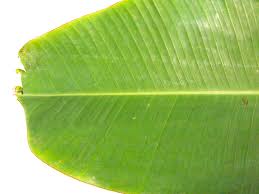How to make potassium hydroxide from banana leaves
The process involves burning of banana leaves into white ashes. There is a kiln that it is designed for burning the leaves. After burning the banana leaves a given amount of the ash is measured into a basket lined with a clean jute bag and placed on a drum of two horizontal rods. The ashes are molded up around the sides of the basket to leave a depression in the center to ensure proper draining of caustic solution(potassium hydroxide solution). Quantity of warm water about twice the volume of the ashes put in the basket is slowly added to the ashes allowing the ashes to absorb much water as possible before adding more water. After the ashes have absorbed enough water, brown lye(CAUSTIC SOLUTION) begins to drop slowly from the bottom of the basket into the tray or a drum under it, as more water is added on the ashes.
The dripping must be slow enough to allow maximum dissolution of sodium hydroxide in the ashes. When no more solution drops, the lye obtained is put back in the basket to repeat the leaching process. After this the strength of lye is determined manually by using chicken feather, that sounds funny!!If it dissolve chicken feather or support a fresh egg then its strength is suitable and it can be used in making soap and in other application. This can also be assured using hydrometer to determine the density of the solution.
Potassium is an alkali earth metal, it belong to group one elements. It has 19 atomic number, it it fall below sodium. As we know group one elements the reactivity increasing down the group as result of increasing of the atomic number, Thus weakening the effective nuclear charge. This makes potassium atom easily lose its one outer electron.




Comments
Post a Comment